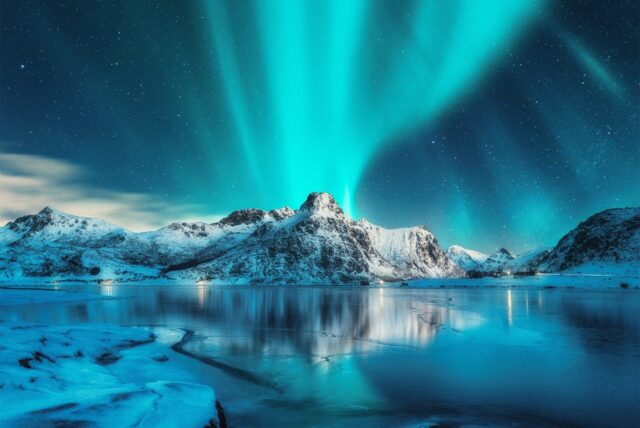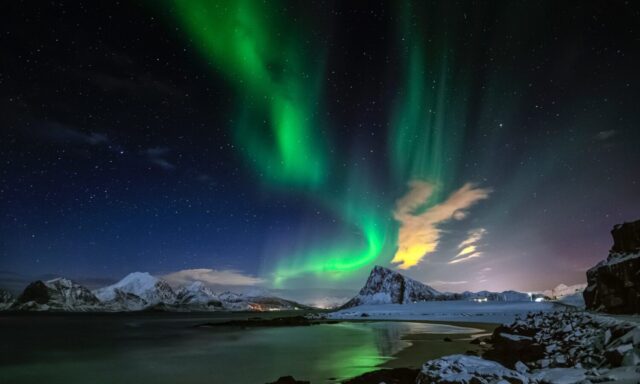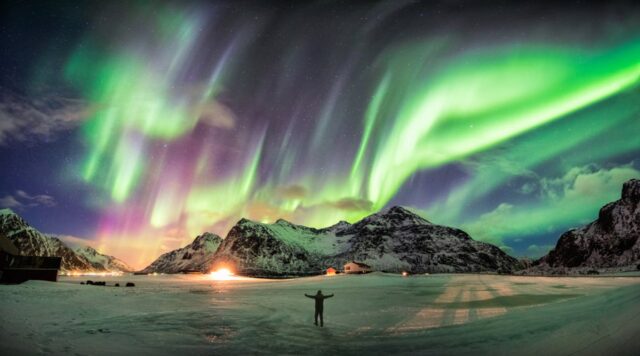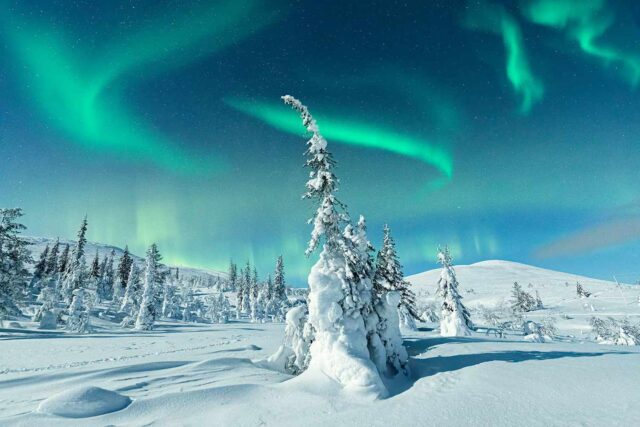
Of all nature’s dazzling phenomena, none elicits more wonder than the ethereal Northern Lights. Like an abstract painting streaking across the night sky, there is something profoundly magical in the moment the vibrant aurora comes alive.
Yet this cosmic display remains shrouded in a mystery and unpredictability which adds to its allure. Therefore aurora seekers need to enhance their chances of glimpsing the mystical lights by arming themselves with key viewing strategies.
In this guide, we share insider knowledge on the science and ideal conditions behind the Northern Lights. You’ll discover expert tips on maximizing your sighting possibilities based on location, weather, timing, and more.
Read on to prep your strategy before embarking on an Aurora-hunting adventure. Then let luck and wonder take over to create a travel experience that may just change your perspective forever!
What Are the Northern Lights?
The scientific name for the Northern Lights is Aurora Borealis. Caused by collisions between electrically charged particles from the sun which enter the Earth’s atmosphere, these dancing lights are the result of gas particles becoming energized.
Their color variations reflect the type of gas particles that interact. Pale green and pinkish-red aurora are produced by oxygen molecules located up to 200 miles above the Earth’s surface. Blue and purple-hued lights signify nitrogen gases colliding at even higher altitudes.
Their ghostly shapes also appear in differing forms, from slowly undulating waves to fast flickering bursts. Their intensity ranges from a faint glow hovering along the northern horizon to dazzling streaks stretching right across the sky.
Though aurora displays were once shrouded in myth, science has revealed that their true source is this awe-inspiring collision of solar particles with our atmosphere. Yet this breathtaking phenomenon, which only appears above the most northerly latitudes, retains a magical quality.
Where and When to See the Aurora
To locate the elusive aurora borealis you’ll need to journey to the high northern latitudes near the Arctic Circle. This otherworldly light show is most visible in band-ringing areas like Alaska, Canada, Iceland, Scandinavia, and Siberia.
In Europe, Northern Norway sits directly under the auroral oval band, a prime base for observing it. Popular viewing points include Tromsø, Narvik, Alta, and the Lofoten Islands, where very dark, clear skies prevail.
The optimal viewing season runs from October through March when longer spans of darkness allow the lights to be visible. Long summer days and brighter midnight sun during warmer months drown out potential sightings.
Peak activity tends to occur between 9 pm and 1 am, regardless of season. Statistically, the hours around local midnight offer a prime opportunity to catch the ephemeral glow.
Clear, cloudless conditions are also essential for an unobstructed view of the atmosphere where the light display occurs. Checking weather and geomagnetic forecasts can assist in planning auroral excursions.
Expert Tips to Maximize Sightings

Due to the mercurial nature of the aurora, viewing this celestial event often comes down to a combination of luck and strategy. Equip yourself by using these pro tips to tilt the odds in your favor:
Seek Remote Locations
Escape light pollution from urban areas that can drown out the glow. The further you venture into Norway’s remote forests and mountainscapes, the darker your viewing conditions. WonderInn’s mirrored glass cabin offers optimal stargazing spots.
Use Aurora Forecasts
Monitor apps and sites like NOAA or SoftServe to obtain real-time visibility forecasts based on solar activity and weather. Receiving alerts will enable you to seize the ideal viewing moments.
Note Peak Hours
Plan nighttime activities to align with prime Northern Lights viewing hours (statistically 9 pm – 1 am local time). Remain patient and alert during these key windows.
Stay Flexible
Allow room in your itinerary to spontaneously chase openings in cloud cover, or double back if bad weather hits unexpectedly.
Featured Viewing Destinations

Boasting remote locales far from light pollution, Norway’s accommodations maximize your chances of catching the magical glow.
Riverside Glass Domes
Our transparent geodesic domes deliver panoramic views of the night skies. Gaze through the bubble tents’ ceiling windows while relaxing atop plush beds outfitted with cozy linens. The adjacent Kčld River also reflects a dazzling backdrop when the lights appear.
As Carla raved: “My husband and I traveled from Spain, hoping to finally view the Northern Lights from Norway.
On our third night at Riverside’s incredible dome, we awoke around midnight to a bright, colorful glow and ran outside in our pajamas. There dancing above us stretched the most magical green and purple streaks lighting up the whole sky!”
Maximize Your Aurora Hunt
Taking on the exceptional Aurora Borealis requires strategy. Seek out a dark sky destination within the Northern Lights oval crossing areas of Northern Europe. Plan your trip during peak season, from October to March, when longer nights increase visibility.
Monitor weather and geomagnetic forecasts to seize optimal viewing opportunities. Allow flexibility in your itinerary so you can chase openings amidst changing conditions.
Implementing these tactical tips will position you for a successful sighting of nature’s mesmerizing light show glowing across Norway’s night horizons.
As a travel experience almost mythical in proportion, beholding the luminous ribbons undulating overhead awakens something magical in one’s spirit. Don’t miss your chance to hunt down one of Earth’s most spellbinding wonders!
Most Asked Questions

Planning your Northern Lights viewing adventure? Here we answer common questions from curious travelers like you!
What are my odds of actually seeing them?
In ideal conditions, your chances are as high as 90% if viewing from northern Norway during peak season. Focus on remote areas over more populated cities to boost the odds.
Can I photograph the Northern Lights?
Absolutely! Use a DSLR camera, tripod, and manual settings for best results. Extra batteries are a must in cold weather.
What else might we see in the night skies?
Meteors, satellites, distant galaxies, nebulas, the Milky Way band, brilliant stars, and even the occasional comet!
How cold does it get at night?
Frigid Arctic temps can range from 5°F to well below zero. Bundle up in insulating layers and bring hand/foot warmers! Most WonderInn viewing accommodations also offer toasty respite.









